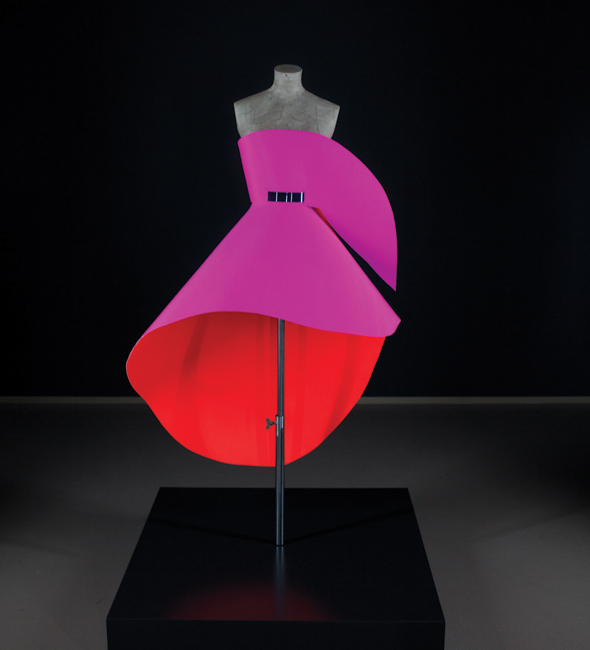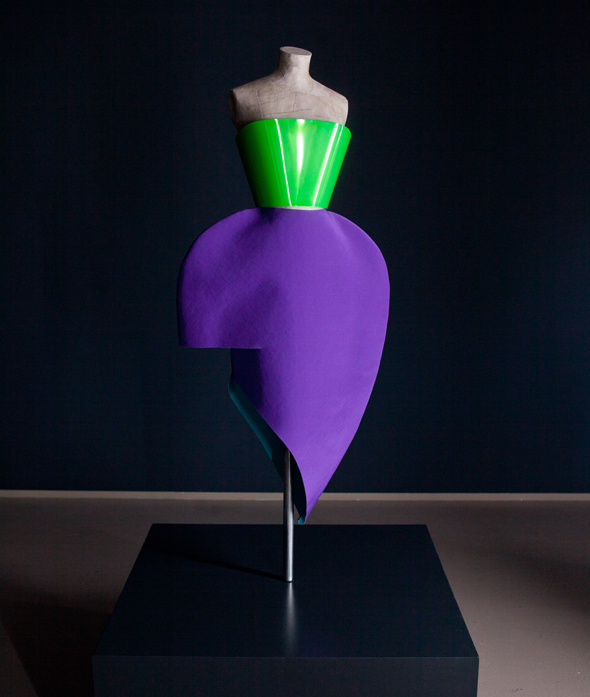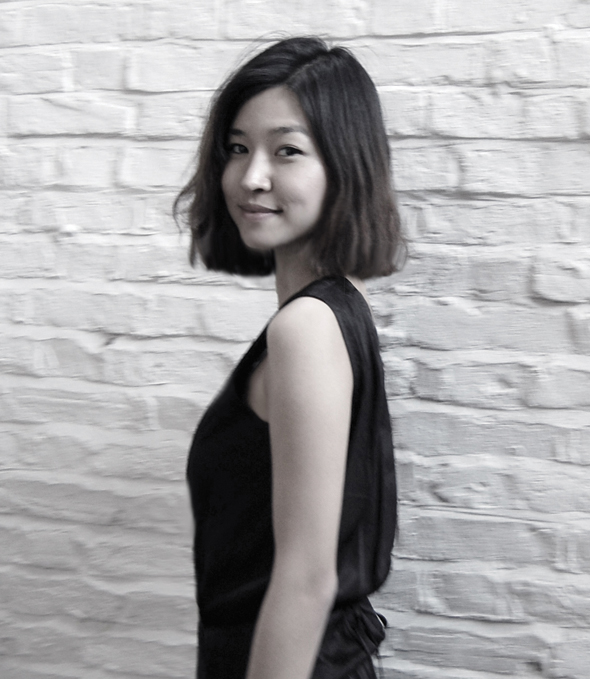

Korean-born designer Rejina Pyo’s eye for striking forms and finely tuned affinity for materials was immediately apparent at the Central Saint Martins Fashion MA show. As models carrying totemic, charred wooden structures floated down the runway in long, draped robes at once ethereal and dramatic, her elegantly modern pieces stood out as highly wearable yet distinctly avant-garde, contrasting a sense of primitive secrecy with bright hues and elegant silhouettes.
She was soon invited to design a capsule collection for H&M-owned Weekday inspired by her MA collection, and she quickly found herself tapped as lead assistant designer to Roksanda Ilincic. But the real breakthrough came when she attracted the attention of influential art collector and champion of emerging fashion talent Hans Nefkens. Earning the Hans Nefkens Fashion Award in 2012 allowed Rejina to present a more artistically out-of-the-box collection in a solo show at the Netherlands’ Museum Boijmans Van Beuningen in Rotterdam from September 2012 to February 2013. Dubbed “Structural Mode” the collection was formed of bold, saturated color pairings and sharp angles harmoniously accented with smooth arcs and sensual curves, with an emphasis on nipped-in waists and geometric details in metal and plexiglass.
While bold color blocking and strong contrast are both used heavily in both her MA and Hans Nefkens collections, the similarities stop there. The futuristic take on shape, color and mixed media in the “Structural Mode” collection uses stiffer fabrics to give Rejina’s draping an entirely different quality that is livelier and much sexier. Simply fitted sheath foundations flanked with strong architectural shapes seem like a natural evolution from the collection’s more serious and primeval predecessor of flowing fabrics and earthy wood and leather.
With such a promising future already taking shape, it’s no surprise that Rejina has recently launched her own eponymous ready-to-wear label, which brings her striking artistic aesthetic out of the museum and into pieces that can be worn every day.

When did you first know that you wanted to be a fashion designer?
Fashion was just everywhere for me. My mum was a fashion designer when she was younger (she’s now an interior designer and painter) and I always looked at her sketchbooks when I was a kid. It looked incredible! Whenever she was making something, I wrapped the fabric around myself and played with it. I learned how to use a sewing machine from her and started making dresses when I was fourteen.
What were your experiences working as Roksanda Ilincic’s first assistant designer?
It was such a great experience. Having worked in a big corporation in Korea, working in a design studio is different. I worked very closely with Roksanda and was responsible for assisting in all of the key areas of design including research, coming up with ideas, fabric selection, draping, sketching, embroidery design, print design. I also designed the Net-a-Porter exclusive collection and Debenhams collaboration collection. The job was so broad and I got to experience almost everything, which was incredible.
What was the inspiration behind ‘Structural Mode’?
The boundary between art and fashion is always somewhat blurred, so I wanted to experiment with a more direct approach. Instead of creating garments inspired by the color, mood or design of an art piece, I wanted to create sculptural art that had been influenced by garments. None of the pieces are wearable, although at first glance they look like dresses or garments to some degree. Up close however, you can see the pieces are made using metal and plastics along with fabric, becoming sculptures in their own right.
What does fashion mean to you?
For me, fashion is absolutely an art from. Art and fashion share a lot. They are things you want to look at, to possess, and there is often the element of surprise or the unexpected. It can be beautiful or ugly, but ultimately it is a matter of taste.
How do you approach designing wearable versus conceptual garments?
I am not so concerned with trying to make ‘wearable art’ or ‘art as fashion.’ It’s very different. The pure side of art is that it doesn’t need to be used. Design needs to be useful and that is much more commercial. I do more artistic work when I have freedom to do whatever I want without pressure to sell it afterward. But when I design for my own label, I think about the woman who will buy and wear the garments. Eventually, it has the same aesthetic, as it all comes from me. I enjoy getting to do both, and it allows me to be imaginative as well as realistic.
What’s next for your label?
I believe that if you are true to yourself and have your own voice then there will always be a place for your designs, but so much is about timing and luck! I think you know it’s really serious when you find yourself in Paris meeting buyers and getting stockists. We had great feedback from buyers worldwide as well as editors and stylists. I am excited about next season too. I try to think of my label as a life long project; I would like to develop it slowly but surely, enjoying every part of it.
Text by Marta Bobic

